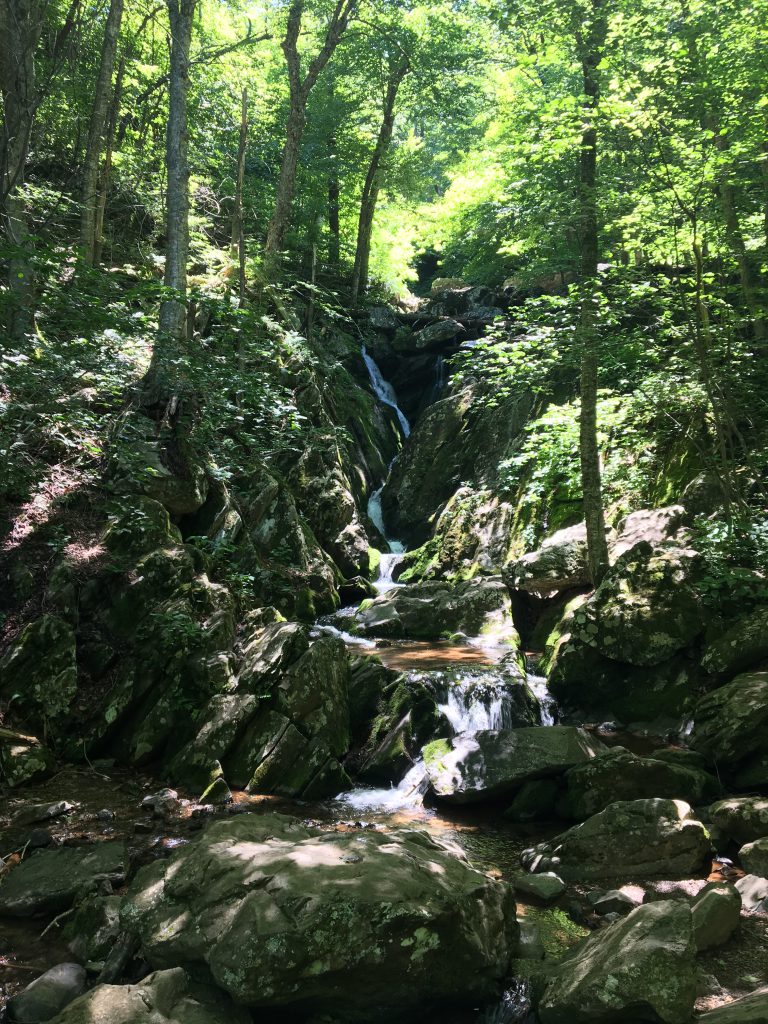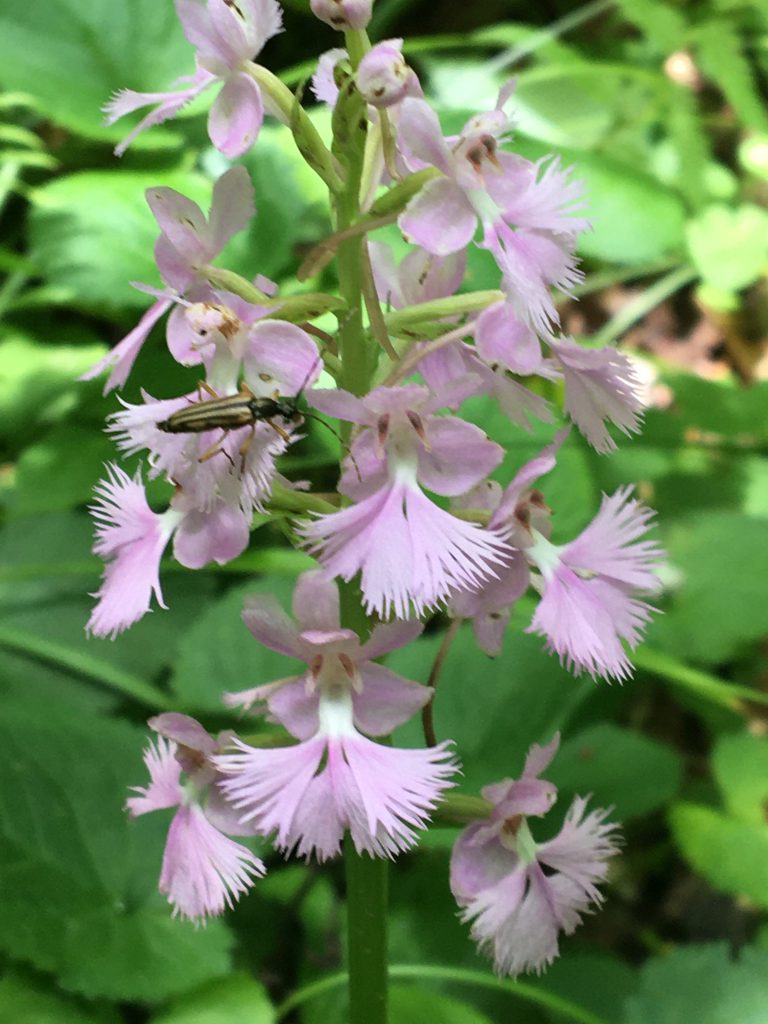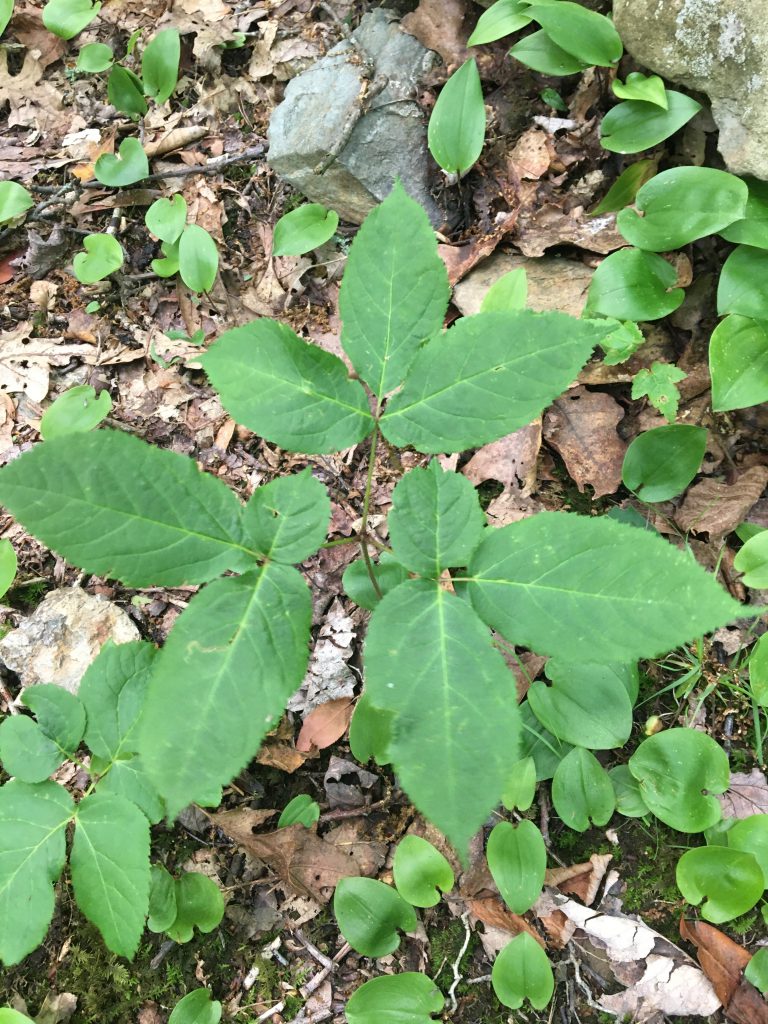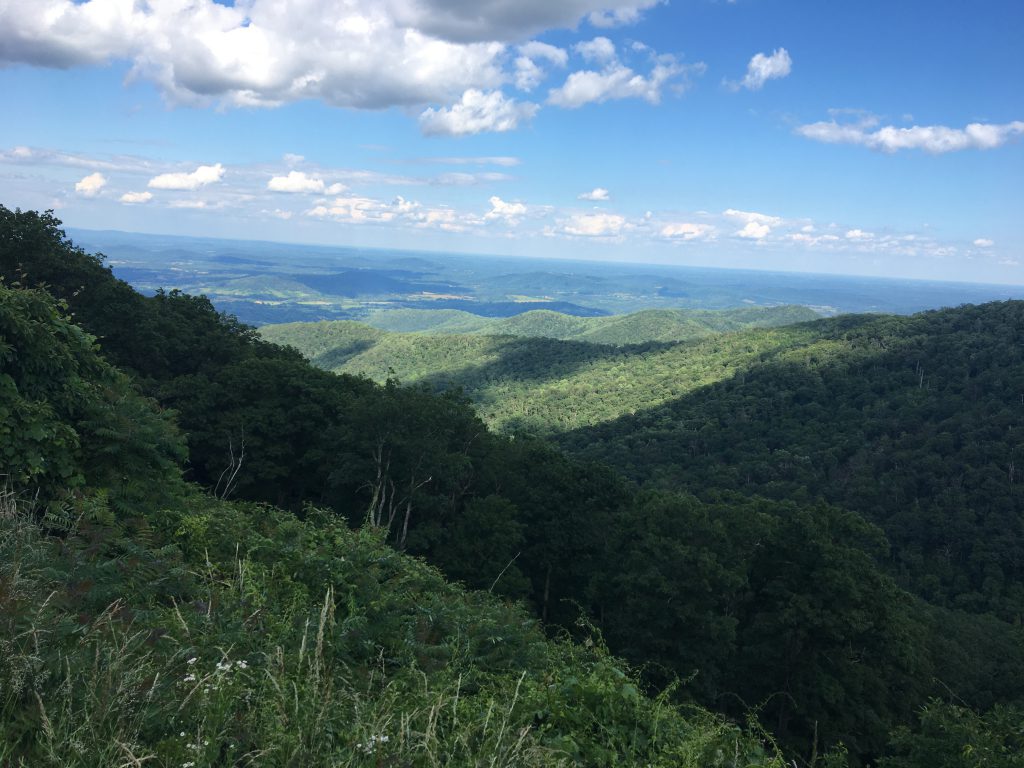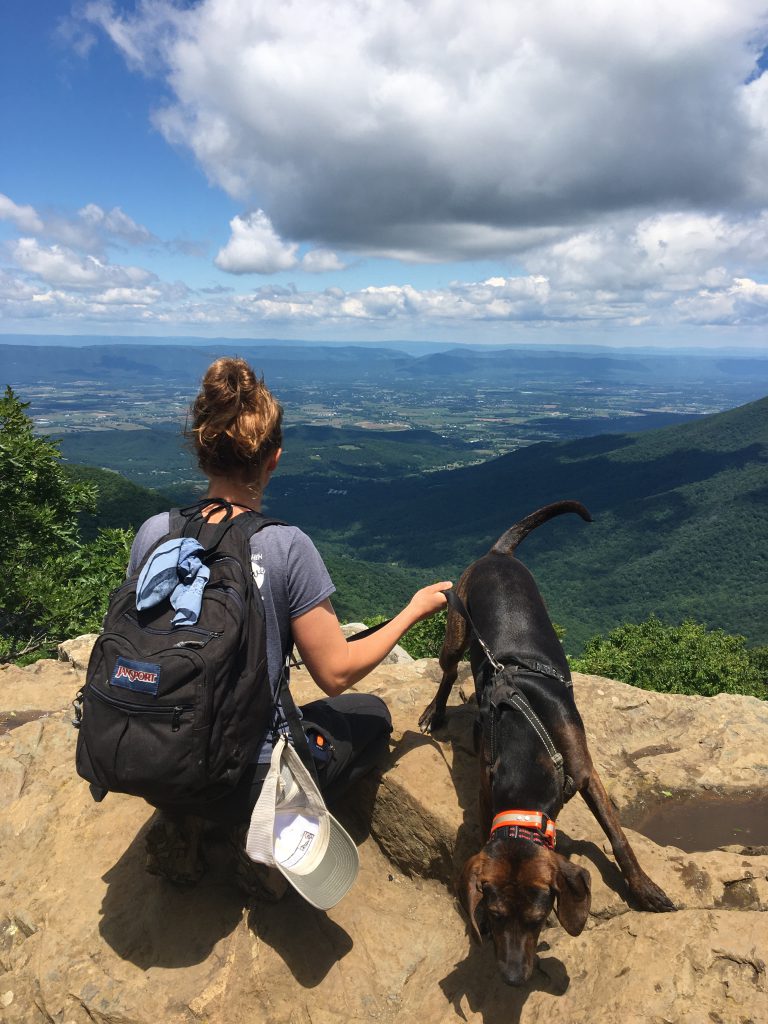The wide shallow river with a famous name moves and moves without any signs of exhaustion. Its water, brownish after a recent heavy rain, sparkles in the evening sun. Two eastern kingbirds chase a broad-winged hawk, and three green herons trade hidden riverside hunting posts. I sit down to journal and ask Junip the date. She thinks a second and responds, “it’s Shenandoah Sunday.”
Over the past year or so, I have been studying Dr. Lucy Braun’s 1950 masterpiece, Deciduous Forests of Eastern North America, which has helped me to answer a nagging and slippery question: what should our forests look like? By “our forests” I mean those geologically connected to the central Appalachians. Dr. Lucy Braun peregrinated widely and often through Ohio, Kentucky, Tennessee, West Virginia, Virginia, and Pennsylvania to answer this question and more during the first half of the 20th century. Shenandoah National Park and the Virginia Blue Ridge were included in her study; both are included in the region she classified as “Oak-Chestnut” because they were so dominated by oaks and the American chestnut. At the time she was compiling her impressive work, however, chestnuts had already begun succumbing to the invasive fungus that has all but destroyed the species. We visited two sections of the park that Dr. Braun mentions, specifically: Hawk’s Bill Summit and White Oak Canyon. The former is one of the highest points along the skyline and the latter she calls “the most extensive area of undisturbed forest in the Park.”
The rocky trail to Hawk’s Bill rises steadily and directly to the summit. We have the distinct pleasure of gawking at moose maple (Acer spicatum), sweet birch (Betula lenta), a great deal of lichen-covered northern red oak (Quercus rubra), scattered eastern hemlock (Tsuga canadensis), and the occasional american basswood (Tilia americana) and tulip tree (Liriodendron tulipifera). Red spruce (Picea rubens) and balsam fir (Abies balsamea) are also rather scattered but present; they exist only at the park’s highest elevations. I expect to see some patches of forest near the summit dominated by firs but they are only a drop in the deciduous bucket.
Chestnuts, which likely made up 30% of this ridgetop forest during Dr. Braun’s tenure, are nearly vanished; a stump sprout here and there is all that remains of one of the most important tree species in our continent’s history. None of the dozens of hikers we pass seem to have a clue about this ecological travesty. No signage explains the chestnut’s demise or the gaping hole it has left in the lives of bears, humans, deer, squirrels, blue jays, and the complex food webs to which they belong. I scan the understory to distract from this gut-punch of loss, and see that life goes on in the form of wild columbine, blue and black cohosh, wild sarsparilla, mountain laurel, and a beargrass-like lily called fly poison (Amianthium muscitoxicum).
Near the summit we pass two hikers coming back down who tell us that “it’s beautiful up there but hold onto your hats.” Indeed, wind rushes over bare rock in strong waves; mountain ash and the gnarled branches of bear oak bend and sway gracefully, being well-practiced in wind dancing thanks to their exposed position on the long mountain ridge. The view from Hawk’s Bill is nothing short of remarkable; the Blue Ridge has aged well, eroding into a blanket of wrinkled green ridges from horizon to horizon. I realize that John Denver was surprisingly accurate when he sang, “Life is old there, older than the trees; Younger than the mountains, growin’ like a breeze.”
As we stroll back down the steep slope where chestnuts once fed most of the forest, Eddy sticks her nose into something along the trail and a dark-eyed junco flushes off her nest. We quickly admire the four blue eggs with red speckles cradled in a clean nest cup of grass and rootlets hidden in a shallow depression on the ancient mountain.
The chestnut’s absence continues to trouble me, but I am glad to begin ambling through the “undisturbed” forests of White Oak Canyon. A veery’s ghostly song serenades our stroll through big northern red oaks and sugar maples, scattered hemlocks, and a thick understory of gnarled mountain laurel. A flat shallow headwater stream slides slowly over dark, round cobble, creating a riparian area twice the stream’s width. The large and conspicuous false hellebore (Veratrum sp.) alerts us to the strip of mountain wetland. Junip notices a pink flower downstream, which turns out to be purple fringed orchid (Platanthera sp.) with a yellow and black longhorn beetle lounging in the mesmerizing blossoms. As we descend further into the canyon, however, it becomes clear that White Oak Canyon has also changed since Dr. Braun was here at least 70 years ago.
In her study of this particular canyon, Dr. Braun noted the percentages of canopy trees by species (Table 45, found on page 225 of her book). Chestnut and northern red oak were the two most common species, each making up exactly 15.2% of the canopy trees. Next most common was sugar maple at 12.5%, followed by hemlock at 12.1%. Chestnut oak and white oak were also major components of the canopy, and 9 other species making up smaller percentages, including white ash (Fraxinus americana) and butternut (Juglans cinerea).
As the dogs tug Junip and I through the forest, we soon see no living hemlock trees, only decomposing carcasses of dozens and dozens of hemlock giants killed by the hemlock woolly adelgid, an invasive insect. According to Dr. Braun’s table, 27.3% of the canopy trees were either hemlock or chestnut. Because of invasive organisms from Europe and Asia, brought to North America by careless and unsuspecting humans, over a quarter of the forest Dr. Braun knew and studied is all but gone. The oaks and sugar maples that remain are impressive in size and stature, but on this hike the ghosts speak more loudly than the living.
Change is a consistent part of life, but the sudden disappearance of these two tree species (and with ashes so threatened by another invasive insect, the emerald ash borer) feels different than the evolutionary ebb and flow these mountains have seen for eons. One of the most striking things I have learned from Dr. Braun’s book is that plant communities have been able to exist continually in central and southern Appalachia for millions of years. Said another way, plants have been growing and evolving here in an unbroken process back through time immemorial. Regions as close as northern Ohio cannot say the same, as glaciers wiped the land clean again and again throughout geologic time. Glaciation and the colder climates it wrought over the millennia certainly changed what trees and understory plants were able to grow in Shenandoah from century to century, but life is old here, and has seen tree species come and go over millions of years. Can the forest endure, however, after losing key species in such a short time, with increasing pressure of other invasive species we have noticed in the park, such as gypsy moths and tree-of-heaven?
We find a place to get down into the clear cold stream; the murmuring flow has been playing on this mountain since the Cherokee’s vulture first scraped its giant wings across the land. The dogs splash and drink greedily and I submerge in a pool under a fallen hemlock. I spring out of the cold water like a trout rising for a mayfly, and dry in the sun while Junip scrutinizes the streambed. Hemlock reishi (Ganoderma tsugae) sprout red and golden from the fallen hemlock giants, which they slowly devour. These mushrooms and the pleasing fungus beetles that feed on them are all that lives on from a species lost from White Oak Canyon, perhaps forever.
How much can we lose and still go on? I seldom forget that, as Aldo Leopold wrote, “those with an ecological education live in a world of wounds,” but that never makes it easier. In a deep pool beneath the falls, several native brook trout cruise the clear water calmly, their bright orange fins glowing as they catch bright afternoon sunlight. If these trout, who need cold and clear water to survive, have endured the hemlock’s sudden disappearance and the shade they provided, perhaps the entire ecosystem can also endure.
